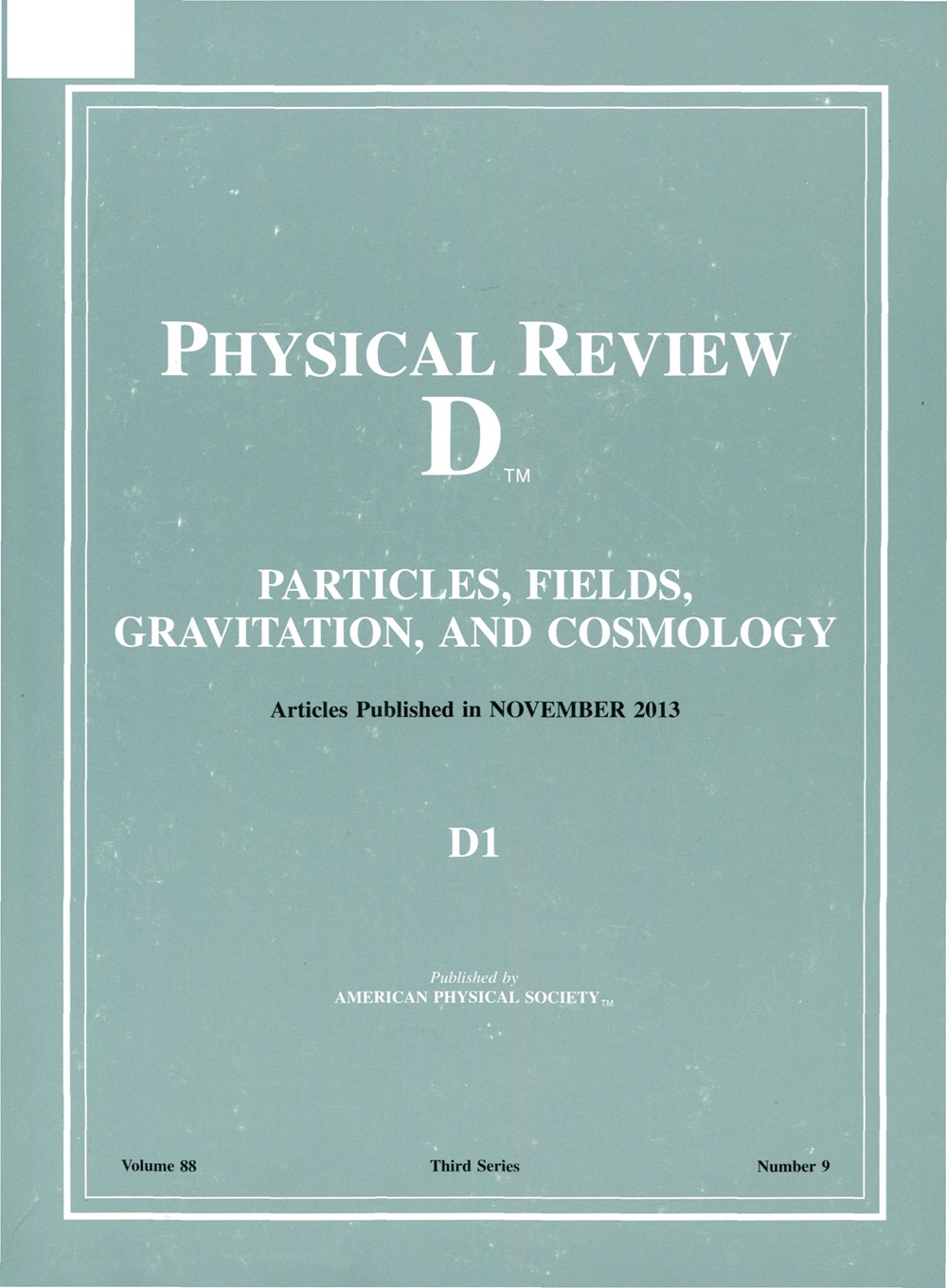重述标量和矢量双夸克的手性有效理论
IF 5.3
2区 物理与天体物理
Q1 Physics and Astronomy
引用次数: 0
摘要
重述了轻重夸克的手性有效理论。基于三味手性对称的线性表示,构造了一个有效的拉格朗日函数。在这里,我们关注的是源自8点夸克相互作用的手性和U(1) a对称项的影响。从该模型中,我们得到了标量、伪标量、矢量和轴矢量双夸克的质量公式,并描述了双夸克质量对自发手性对称性破缺和U(1)A异常的依赖关系。我们把单重重子看作是由一个重夸克和一个重夸克组成的两体系统,然后预测了在手性对称恢复下质谱的命运和强衰变宽度。2025年由美国物理学会出版本文章由计算机程序翻译,如有差异,请以英文原文为准。
Chiral effective theory of scalar and vector diquarks revisited
Chiral effective theory of light diquarks is revisited. We construct an effective Lagrangian based on the linear representation of three-flavor chiral symmetry. Here, we focus on the effect of a chiral and U(1)A symmetric term originated from an eight-point quark interaction. From this model, we obtain the mass formulas of scalar, pseudoscalar, vector, and axial-vector diquarks, which also describe the dependence of diquark masses on the spontaneous chiral symmetry breaking and the U ( 1 ) A Published by the American Physical Society 2025
求助全文
通过发布文献求助,成功后即可免费获取论文全文。
去求助
来源期刊

Physical Review D
物理-天文与天体物理
CiteScore
9.20
自引率
36.00%
发文量
0
审稿时长
2 months
期刊介绍:
Physical Review D (PRD) is a leading journal in elementary particle physics, field theory, gravitation, and cosmology and is one of the top-cited journals in high-energy physics.
PRD covers experimental and theoretical results in all aspects of particle physics, field theory, gravitation and cosmology, including:
Particle physics experiments,
Electroweak interactions,
Strong interactions,
Lattice field theories, lattice QCD,
Beyond the standard model physics,
Phenomenological aspects of field theory, general methods,
Gravity, cosmology, cosmic rays,
Astrophysics and astroparticle physics,
General relativity,
Formal aspects of field theory, field theory in curved space,
String theory, quantum gravity, gauge/gravity duality.
 求助内容:
求助内容: 应助结果提醒方式:
应助结果提醒方式:


